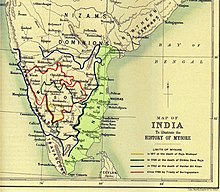The Advent of Europeans
1. Portuguese

In 1498 Vasco-da-Gama came to India at Calicut port, Kerala. The portuguese set up their first factory at the Calicut port. They were welcomed by King Zamorin, who was the king of Calicut. In 1510 Goa was annexed by Portuguese by Governor Alfonso de Albuquerque. He was known as the real founder of Portuguese.He also introduced the 'Policy of Imperialism'.
In 1530, they shifted their capital from Goa to Cochin. The first Governor of Portuguese in India was Francisco de Almeida , he started the Blue water Policy.
In 1661 the Portuguese King gave Bombay to Charles II of England as the dowry for marrying his sister. They also introduced first printing press in India in Goa in 1556. In 1947 India got its independence, however Goa became independent in 1961.
2. Dutch
The people of Holland are called the Dutch. Next to the Portuguese, the Dutch set their feet in India. In 1602, the United East India Company of the Netherlands was formed and given permission by the Dutch government to trade in the East Indies including India.
The Dutch founded their first factory in Masaulipatam in Andhra Pradesh in 1605. Subsequently they also established trading centres in various parts of India. The major Indian commodities traded by the Dutch were cotton, indigo, silk, rice and opium.
3. British
British raj, period of direct British rule over the Indian subcontinent from 1858 until the independence of India in 1947. The East India Company was established in 1600. The British founded their first factory in Surat in 1963 and Sir Thomas Roe played a major part in its establishment.
British first factory in south India was in Masaulipatam in 1616. Their first factory in east India was in Hariharpur, Balasore in Odisha in 1633. The company fortified the Culcatta factory into Fort Williams. During its reign they fought many battles and made many judicial and social reforms about which we will study in detail in the next blog. The Britishers the most powerful European power that ruled India.
4. Danish
Danish refers to something from Denmark .Denmark held colonial possessions in India for 225 years. The Danish colonies in India included the towns of Tamil Nadu, West Bengal and the Nicobar Islands. The King of Denmark-Norway issued a charter in 1616 granting the Danish East India Company a monopoly on trade between Denmark and Asia for twelve years.
During the Napoleonic Wars (1803 AD–1815 AD) the British invaded Danish shipping, and devastated the Danish East India Company's India trade and ultimately captured Danish colonies, making them part of British India.
5. French


Great information gathering skills
ReplyDeleteGood research...keep it up 👍👍
ReplyDeleteHistory students better bookmark this blog. Just one glance before your test will do alot more than fetch you good scores. :)
ReplyDeleteInteresting stuff to read. Keep it up.
ReplyDeleteVery informative nd nicely done ✅
ReplyDeleteAll facts well covered...
ReplyDeleteWell explained...
ReplyDeletenicely wriiten
ReplyDelete